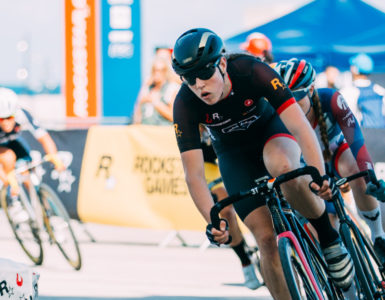In our new series we will be looking into how riders train to prepare themselves for the fixed gear crits. Fixed gear crit racing is a young discipline in the cycling world and there is hardly any documentation on it. The duration of most races is about 45 minutes, so one can imagine the training would be different from the training that ‘regular’ roadies do. What better way to kick off the series with former professional and now Cinelli Chrome rider Davide Viganò. During his 13-year professional road-racing career Davide rode for prominent pro teams, such as Quickstep, Team Sky, Leopard Trek and Lampre. He finished multiple classics and six grand tours. So how does a newly retired pro end up in fixed gear racing?
Photography: Tornanti.cc
Text: Date Burgerjon
| Name | Davide Viganò |
| Date of birth | 12-06-1984 |
| Home town | Carate Brianza, Italy |
| Cycling since | 8 years old |
| Fixed gear since | 13 years old on the track, 32 years old on the street |
| Training hours a week | 21-22 hours |
| of which fixed | 10-11 hours |
| Work/Occupation | 25 hrs a week at Cinelli, Creative office |

“I started a new career. After my retirement last year I started working, in the creative office, at the Cinelli factory in Milan. They asked me if I wanted to race for team Cinelli Chrome, so I did”, Viganò explains ending up with the team.
“I had ridden track bikes before, but never on the open road.” Viganò was European motor-paced track champion in 2012. This year’s Red Hook Crit: Brooklyn No.10 was his first ever street race on a fixed gear bike. “I was scared before the start, but after the race started, I was fine. I loved it.”
“It’s still improving, but I think the Red Hook Crits are almost on a par with pro racing”, talking about the racing level of the fixed gear scene. “The ambiance and the crowd, that’s what surprised me the most. It’s like the Tour de France or Flanders. I mean, there are thousands of spectators on a really short circuit. It’s fantastic.” He also noticed that the interaction between riders is different. “It’s more relaxed, like one big family”.

Photo: Tornanti.cc
The biggest change, next to riding only fixed gear, is combining his cycling career with a day job. “I still train almost every day, but after I’m done working in the factory.” The short distance of fixed gear crits makes it easier than training for longer road races. “I do a lot less long distance training in comparison to last year. I hardly do any seven hour rides, mostly three to four hours now.” Even though Viganò combines his racing with another job as the main source of income, he still feels like a pro. “A pro, definitely pro.”
This past winter Viganò went to the gym three times a week. “I did a lot of strength training for my legs and my back”. He doesn’t think cyclists should train their arms. “It’s dead weight. It just lowers your power to weight ratio”, the Italian explains.
Viganò doesn’t have a trainer or coach, nor does he use a power meter, “I use my schedule from last year, but I changed it up a bit. I do tend to focus more on quality instead of quantity (…) I find that 40/20 intervals are perfect training for fixed gear crits. They really simulate a race, like accelerating out of every corner and the changes of pace”.

The Italian does his training on both his road and fixed gear bike. “When training on my fixed, I usually ride 49×15 or 49×16, but I do my interval training on my geared bike most of the time. (…) I do my intervals uphill just outside Milan and I like to do them at a high cadence.”
Viganò finished fourth in the Brooklyn No.10 race, with a broken wrist. Yet he thinks he will be ready before the Red Hook Crit in London coming July. “I only lost like a week and a half of training, so I should improve really fast”.
When at Team Sky Davide Viganò had his whole season planned out. This year was totally different. “I just rode my bike when I had the time. I thought about a Red Hook sometimes, but after Brooklyn they are in my head, they are goals. I want to win them all.”
Davide Viganò’s favourite training
| Warm up for about 60 minutes |
| Find an uphill section where you can ride all out for at least 20 seconds. That is where the fun starts. |
| At the start of the climb, go as fast as you can for 20 seconds followed by 40 seconds of recuperation (real easy riding), repeat this 10 times. |
| After that, recover for 10 minutes by some easy riding. And then, do another 10 intervals. |
| Depending on your fitness level and form, you can do three to four segments of 10 intervals. When improved you can extend the intervals to 30 seconds all out and 60 seconds of recuperation. |





